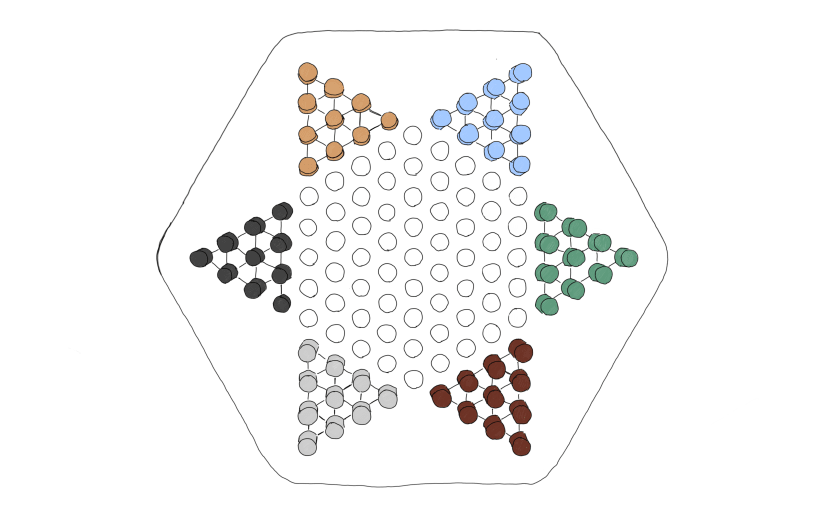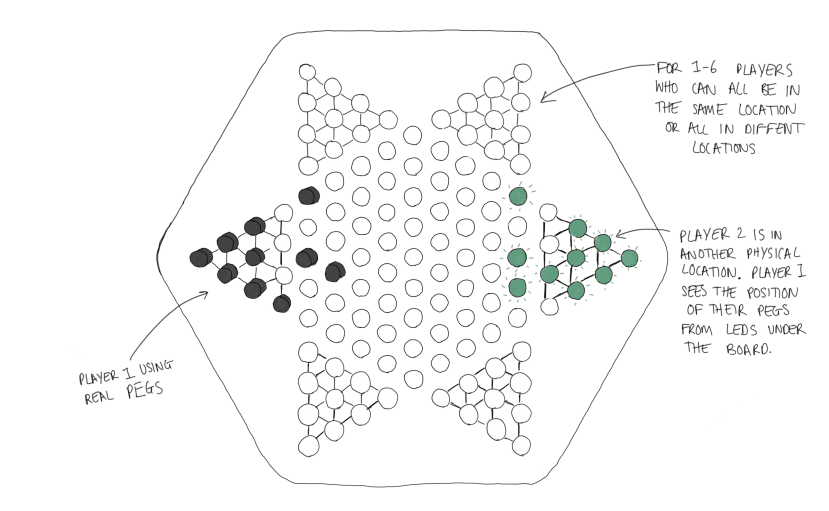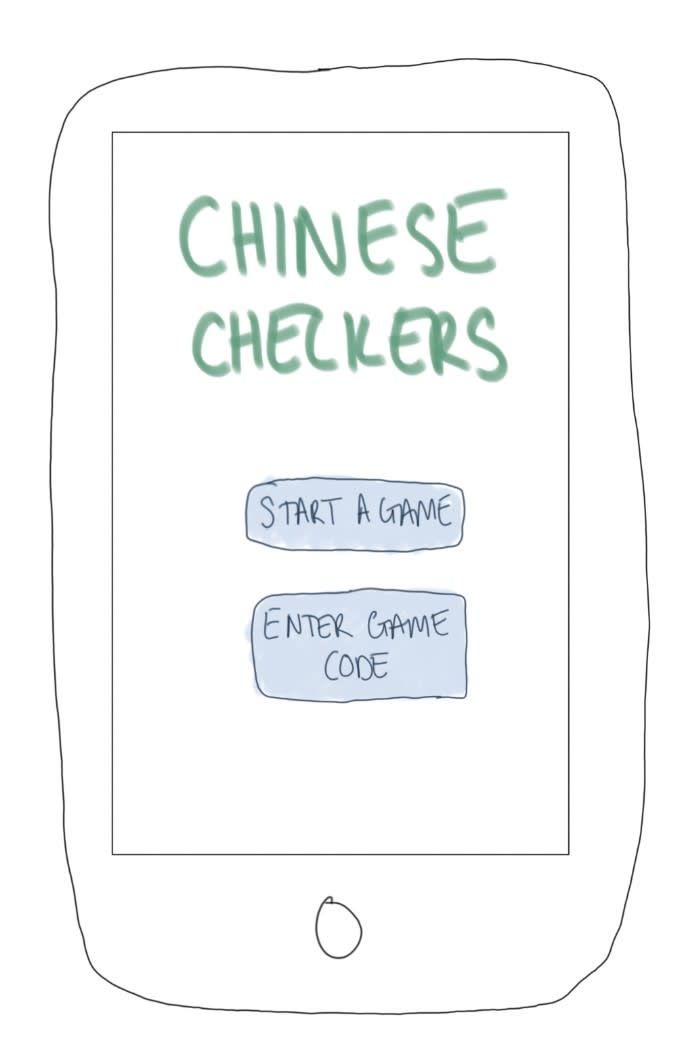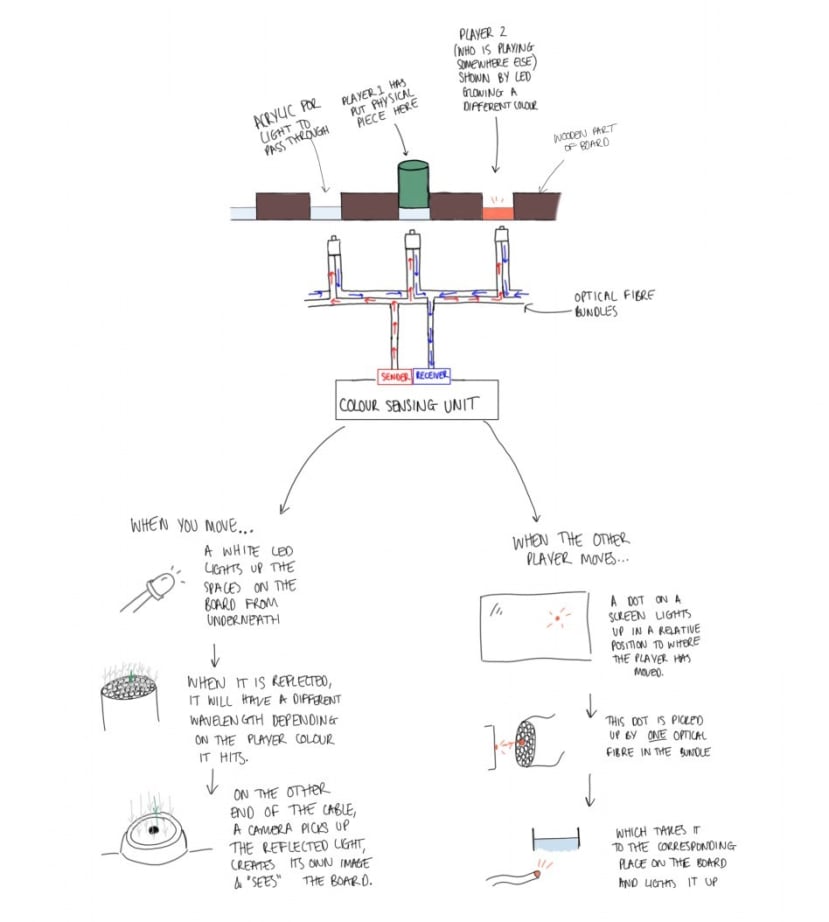ICRS Design Hackathon - A physical multiplayer board game for socially distanced households
Follow projectHow do you feel about this article? Help us to provide better content for you.
Thank you! Your feedback has been received.
There was a problem submitting your feedback, please try again later.
What do you think of this article?
 The criteria for this hackathon is to design something that would improve your quality of life at home. Our concept is a physical board game that enables people living in different households to play together as if they were in the same room
The criteria for this hackathon is to design something that would improve your quality of life at home. Our concept is a physical board game that enables people living in different households to play together as if they were in the same room
Parts list
| Qty | Product | Part number | |
|---|---|---|---|
| 1 | Raspberry Pi, PiNoIR, Camera Module, CSI-2 with 3280 x 2464 Resolution | 913-2673 | |
| 1 | ADAFRUIT INDUSTRIES, DPI TFT Kippah with 5in LCD Display | 124-5488 | |
| 1 | Optical fibres. Can be found here: https://uk.banggood.com/0_75mm-300mRoll-PMMA-Plastic-End-Glow-Fiber-Optic-Cable-For-Star-Sky-Ceiling-LED-Light-p-1225461.html?utm_source=googleshopping&utm_medium=cpc_organic&gmcCountry=GB&utm_content=minha&utm_campaign=minha-gbg-en-pc¤cy=GBP&cur_warehouse=CN&createTmp=1&utm_source=googleshopping&utm_medium=cpc_bgs&utm_content=sxxx&utm_campaign=sxxx-ssc-gbg-all-newcustom-ncv80-0928&ad_id=468370263002&gclid=CjwKCAiAjp6BBhAIEiwAkO9Wuoy45kumAHwmEmH2AgbzjRduv6dNWNS3hXPQANvR_V_bmitIAGomTxoCU5EQAvD_BwE | 1225461 | |
| 1 | 4 V White LED 5mm Through Hole, Cree C503D-WAN-CCbEb151 | 810-6705 | |
| 1 | 300mm x 8mm Diameter Stainless Steel Rod | 786-6015 | |
| 1 | Raspberry Pi Compute Module 4 with WiFi | 206-4837 | |
| 1 | Clear Plastic Sheet, 500mm x 400mm x 3mm | 824-654 | |
| 1 | Cherry wood for board. Supplied from: https://www.britishhardwoods.co.uk/planed-all-round-american-cherry-timber.html | ||
The problem we are trying to solve
The task
Have you ever had an idea of how you can improve your quality of life at home, especially during this pandemic? The criteria for this hackathon is to design something that would improve your quality of life at home.
Our problem
The coronavirus pandemic has resulted in a ban on many traditional methods of socialising. The remaining options are to go on socially distant walks, play online games or catch up on a video call. However, this has resulted in ‘Zoom fatigue’ for many and a desire to do something ‘normal’ again.
The rise in popularity of chocolate tastings and ‘cook-along-with-me’ sessions show that people crave interacting with real and physical things whilst doing these activities with others. Whilst video games are certainly fun, they lack the sensual elements of a real board game.
We wanted to make a physical board game that people who are physically apart can play together.
How to play
Each player turns on their board connects it to the app via Bluetooth. One of the players starts a server on the app and the others join.
When you move one of your pieces, you simply move your peg to the desired spot. The board detects a change in position and sends a message to all the other boards to notify them of the change.
When a player in another household moves their piece, your board is sent a message about the change. The place that they have moved to lights up in their player’s colour. The place they have left returns to glowing white.
This game is for 2-6 players, Note that it has been designed to have any number of players in each household eg six players each in a different house or two households each having three players.
This game is for players 6 and over.
Benefits
- A unique form of socialising for friends and family who cannot meet up in person.
- To be used when friends and family are physically far apart - incredibly useful during a pandemic.
- Allows players to enjoy the feel and sounds of a physical game board.
- No need for players to describe their moves over a phone call (e.g “move my red peg from A1 to B2, No - B2 not A2!!”).
- Everything needed for the game fits inside the board, this means it is easy to send in the post and pack away.
How it works
Use of IoT
The board connects to the internet in order to communicate with other households that also have the game. This is how the board knows when another player has moved and to tell all the other players where you have moved, too.
The app
The app is needed to ensure you don’t join someone else’s game! It means you can easily find your friends and family. Once the game has begun, you can put your phone away and forget about it, if you wish.
Electronics
All of the electronics are hidden all inside the board. A white LED lights up the spaces and the reflected light is used to find out who is where on the board, When the light is reflected, it will have a different wavelength depending on the player colour it hits. On the other end to receive the reflected light is a camera. When it receives the reflected light, it creates its own image of what colour is where on the board, thereby "seeing" the board. Note that a bundle of optical fibres are used to transfer the light throughout the system.
When a player in another household moves, there is a screen within your board that lights up to show where they have moved to. This dot of light travels through an optical fibre to the real position on the board. A diffuser disperses the light ray to make the position appear to be glowing.
Mechanisms
The only mechanism present is a simple drawer in the base of the board used to hold the pegs when the game is not in play.
How we plan to build it
The board
The board will be made from the following pieces of cherry wood:
- One sheet for the top surface. This will be drilled to create the holes for the pegs. In these holes, an adhesive will be used to stick the acrylic “windows” to the surface. Laser-cut lines are featured on the top surface to create a make the board’s design more interesting and modern.
- Panels to make the sides of the board.
- Panels to make up the drawer. The shape of the handle will be cut out before the panels are joined.
Note that all joints will be joined using an adhesive.
It will be finished with a lacquer to create a shiny, smooth and soft finish.
The pegs
Long bars of stainless steel will be cut, like a sausage, into smaller chunks that are the desired height of our pegs. The edges will be sanded, buffed and cleaned to finish.
The electronics
During prototyping, we intend to use a breadboard for testing the concept. We will test the prototype by first ensuring the colour sensing system is viable. Then we will continue to build the light board, write a program, then test and calibrate the sensing network. When the design is finalised, we intend to use a PCB to fix all the components in place. Finally, the casing will be adjusted as necessary to fit the electronics and machined into shape.
Conclusion
Possible improvements
We realised that it may be difficult for players to know when it is their turn to play if they cannot see the other players moving their pieces. One possible solution is a light at each tip of the star which glows when it is that player’s turn.
Furthermore, we have not been able to test our colour sensing system. Upon prototyping and testing, we can see if this system is viable and whether to go forward. Other ideas we had for sensing where each player is are:
- Using a pressure sensor under the board and having pegs of different weights for each player.
- Using photoresistors and using pegs of different opacities.
Final thoughts
We foresee that the main challenge of building this board would be calibrating the sensors to track the movement of the physical pegs accurately. Latency will also pose a challenge to smooth gameplay and user interaction with our preliminary prototypes will be essential to further develop the product.





